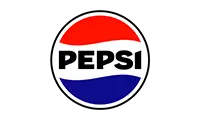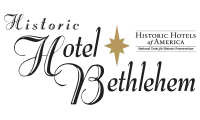Building Better Lives
9/22/2009 12:00:00 AM | Field Hockey, Athletics
 |
In the African nation of Uganda, the word Bula has many meanings. For former Lehigh field hockey player Melissa Fricke, the preferred meaning of the word translates to “blanket.” After graduating from Lehigh in 2006, Fricke spent four months in Uganda, volunteering in a children’s home and teaching at the local primary school. It was an eye-opening experience for the Long Island native, who was appalled at the conditions in which children were expected to learn.
“The children studied in awful conditions,” Fricke explained. “There were no desks, doors, windows or lights. The classrooms had dirt floors. The school was poorly constructed and had a thin, leaky roof. The children have a desire and passion to learn, but the conditions did not foster a positive learning environment.”
Fricke decided to do something to provide that blanket for the children in the village. Gganda needed a new school building and Fricke was determined to deliver one. She returned to the U.S. and spearheaded several fundraising initiatives. By early 2008, ground was broken on the new school building and the groundwork was laid for BULA: Better Understanding of Life in Africa, the organization founded by Fricke with the mission of securing brighter futures for African youth.
At Lehigh, Fricke was a double-major in international relations and French. She appeared in 55 games over four seasons and was a part of two Mountain Hawk teams that qualified for the Patriot League tournament.
“During my senior year I took a strong interest in development and poverty issues and the severity of it in Africa,” said Fricke. “It was an international relations course on Ethical Dilemmas in World Politics that brought it all to light for me. The class discussions on poverty issues had me captivated with the debates what could and should be done. That is how I ended up in Africa a few months after graduation. What I intended to be learning experience quickly evolved into what it is today.”
Instead of going straight to work after graduation, she chose to spend four months volunteering in Gganda, a village outside Kampala, Uganda’s capital. Her responsibilities included managing a children’s home for 24 children and teaching at the local primary school.
“I saw the conditions first hand and I felt the children needed a proper structure to learn,” said Fricke. “I came home in March and was able to organize fundraisers and raise money for the project. Nine months later I returned ready to build a school.”
Through community supports and various fundraising efforts nearly $45,000 was raised prior to Fricke’s return to Uganda in December 2007. Upon her return she met Andrea Procopio, who arrived in Uganda in September, taking on many of Melissa’s responsibilities, and would eventually become Vice-President of the organization. Several other key volunteers emerged, and Fricke also encountered Tom Harrison, an architect from London who managed the construction project. On January 14, 2008 ground was broken for the reconstruction of St. Kizito Primary School.
“I lived in the village so I knew the people,” recalled Fricke. “I taught at the school and understood the challenges faced.
Fricke continued, “I fell in love with the village, the people and the school. I couldn’t pass up the opportunity, and I received overwhelming support.”
Among the features of the new school building were eight cheerful, brightly-painted classrooms, spanning Nursery School to grade Primary 7, two teacher offices and a staff room, a water tank, solar lighting, windows and doors, toilet facilities ,quality roofing and flooring, desks and chalk boards. Architects utilized several innovative building tactics, including the use of a foundation pad, and the use of Interlocking Stabilized Soil Blocks, the bricks that were used to build the school walls, which also become one of eight examples used in a case study for the United Nations.
“The ISSBs are an innovative technology that creates each block through the use of a machine that compacts a mixture of soil, cement and water,” Fricke explained. “Making the bricks on site with this technology allowed us to put to use the soil excavated for the tank and the pit latrines. These bricks are not only aesthetically pleasing and structurally superior, but they have tremendous environmental appeal.”
Five months later, St. Kizito Primary School re-opened its doors to the children of Gganda. BULA’s work was far from complete however. Fricke and Procopio returned to Uganda in January 2009 to supervise additions to the school, which included a kitchen, water tanks, water filters, shutters and textbooks. In addition, late in 2008, BULA developed a youth art exchange, titled Connecting Classrooms through Creativity, where American students are creating artwork to be displayed in BULA Schools and artwork by African students has in turn been displayed in American schools.
“The art exchange program is a great way for us to connect students across the world,” said Fricke. “Much can be shared through art about life and the student's respective experiences. Beyond the cultural exchange, the students in America are actively supporting the cause. With each piece of artwork, a donation of $1 is requested. The concept behind this is to demonstrate how every little effort can make a difference to someone else, even across the world.”
Additionally, Fricke spearheaded BULA’s second project, the improvement of a poorly run children’s home in Gganda. More recently, a fellowship program was created, allowing a recent college graduate to live at the children’s home and teach at St. Kizito Primary School.
As for the future, Fricke and her organization will look to continue doing what they can to help the children in Africa. BULA has selected its next school project, and is focused on branches out to the villages that neighbor Gganda to try and enhance the educational experience of those children.
“The vision is to continue to build schools for those that are struggling,” Fricke said. “Education is a great tool for change and for creating opportunities for a better life and we want to do whatever we can to support that. We have our next school project lined up and we have visited many others that we would love to support down the line. One day I'd like to further pursue the development field academically, but for right now, there is so much we can still do to help.”









